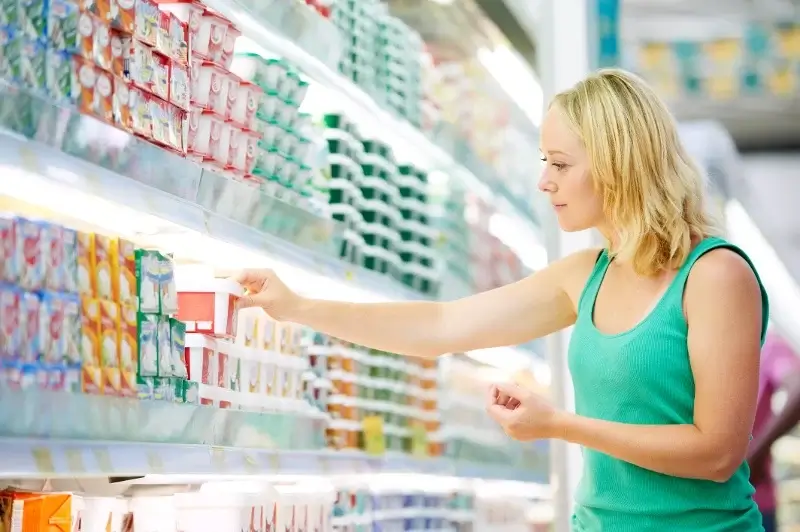
The face of grocery shopping is changing—here’s what you can expect
Grocery spending is at an all-time high. But, many things have changed in the past two years or so (mainly due to the COVID-19 pandemic). Social distancing, stay-at-home orders, lockdowns, and panic buying are well-known terms we’ve become familiar with, and most likely experienced first hand.
Consumer perceptions have changed regarding the way they shop, and while there’s been a significant increase in eCommerce, the in-store shopping experience isn’t about to go away. Probably one of the biggest disruptions to the in-store experience has been an increased awareness of hygiene and sanitary procedures. This has called for much stricter standards, policies, and Standard Operating Procedures (SOPs), which can be daunting for retailers to implement and manage effectively. So, even though grocery spending is high, many retailers find it challenging to adapt to all the recent changes.
But today’s modern technologies leave no reason for stricter standards, or any other disruptions for that matter, to affect your business. Leading stores have found great success by implementing digital technologies for smoothing their day-to-day operations (e.g., maintaining product consistency and quality, document management, product labeling, identifying allergens, performing recalls, and even supplier audits and certifications and self-assessment audits).
Here, we look at four key trends that are currently driving consumer habits, and how digital technologies have been leveraged by leading brands to gain an upper hand in a seemingly ever-changing environment.
Trend 1
More consumers are spending more time at home
“With more than half of consumers eating at home more often and some with less money to spend, there are a myriad of challenges and opportunities for retailers and manufacturers to navigate” - Colin Stewart, Acosta.
One consistent trend over the past 18 months is that more consumers are cooking meals at home, and have relied more on grocery outlets for ready-made meals, and less on restaurants.
The number of families that dine at home every day has increased from 18% (before the COVID pandemic) to 31%. Of this, 92% say they will continue this trend. Also, about 40% of American adults now work from home, and a recent study estimated up to 70% of these individuals can work remotely, even if it’s just part-time. This trend will persist since researchers estimate that by 2022, more than a quarter of the workforce will still be slugging it out at home. Consequently, more people prepare and eat meals at home, creating a problem for local takeout joints or restaurants, but opportunities for grocery retailers.
It’s only a matter of time before “cooking fatigue” sets in. In fact, a full quarter of all respondents of an Acosta survey said they were tired of cooking meals at home. This presents an ideal opportunity to simplify the cooking process. For example, leading grocers have conceived several innovations:
- Gelson’s Markets offers complete curbside pickup dinners for two or four people.
- Schnuck Markets recently partnered with DoorDash to deliver prepared foods from its deli.
- Hy-Vee created a website dedicated to prepared foods (e.g., ready-to-eat meals and take-and-bake options).
- Kroger Co. created meal kits (“Home Chef”; e.g., quick-cook and oven-ready meals) to encourage meal preparation among consumers.
More products and a larger number of consumers, however, require better product management. This is where automated technologies shine. The focus is to ensure a positive and consistent guest experience, something restaurants have long implemented. Specifically, this involves staff training assistance (high levels of service), menu optimization (attract more customers and drive sales); and quality control (product consistency).
Trend 2
Consumers are demanding innovative products
“Changing customers’ habits have necessitated innovation, and the industry is primed for big changes with new technology.” - Forbes
During lockdown, people started eating healthier, since they became more aware of their eating habits. This led to reduced spending on other products that were frequently bought, creating a problem for many grocery retailers. But some retailers capitalized on this market, for example, by creating innovative new products such as functional beverages and healthier meal kits. So, the pandemic gave grocery retailers an “unexpected boost”, and this trend will likely continue long after the pandemic. Such product innovation is definitely something that grocery retailers can use to their benefit.
Product Lifecycle Management as an innovative digital technology is crucial for executing product innovations. This becomes especially evident when managing product labeling for grab-and-go foods, for identifying allergens, or performing recalls, amongst other things.
Grocery retailers compete with traditional restaurants for consumers’ food service spending, and an automated and digitized ingredient database is essential for product innovation that will draw more customers.
Trend 3
Labor shortages are a consistent result of constant change
Regulations are constantly changing as a result of the COVID pandemic, which creates a big problem for grocery retailers who have to adapt their products and protocols within a moment’s notice. As a result, the grocery industry should constantly be ready to innovate and adapt to changing regulations. By digitizing the shopping process, Kroger found that consumers became more accepting of digital technology since they perceived it to be a safer option than in-store shopping.
The pandemic created another problem: labor shortages. Many businesses not only struggle to hire staff, but also to train them quickly enough. Daily operations continue for grocery stores, who simultaneously have to uphold operations and ensure that their staff are trained and up to date with ever-changing SOP’s. An opportunity exists for grocers to “Utilize technology to drive toward labor-saving solutions.”, according to Acosta. And since 70% of consumers plan on continuing their newly developed habits, businesses should adapt or die.
Digitizing policies and SOPs is the best way to stay up to date with changes, which ensures that brand standards are realized. Businesses that adapt quickly will likely be impacted the least post-pandemic. Also, consumers were once less accustomed to digital technology in the grocery industry, but are now much more used to it, for example, online shopping. This means the time is right for implementing digital technologies. Not only that, technology has become an important differentiator for category management and supply chain automation.
The past year has challenged retailers’ supply chain management to their limits, which is why maintaining a robust supplier information warehouse is more important than ever. Restaurant operators used this to their advantage for transitioning to alternative suppliers. This helped them maintain menu consistency and quality, without reducing their offerings.
Finally, digital technology can also be used for numerous other things, such as partner onboarding, KPIs and vendor scorecards, supplier audits and certifications, and automated record keeping and document management.
Trend 4
Customers are more aware of safety and hygiene
“Although the number of COVID-19 cases is declining compared to the start of 2021, it is important retailers do not lose sight of hygiene and safety issues.” - Mintel
Customers have developed a preference for online shopping due to the pandemic. But with the increasing number of vaccinations, shoppers are returning to in-store shopping. However, it’s doubtful whether the shopping experience will be the same. Increased hygiene awareness has become one of the biggest disruptions in the industry and has resulted in more stringent contactless operational procedures for many stores and supermarkets.
This creates a problem for stores since the lax implementation of sanitary procedures could drive customers away. An “unsafe” shopping environment will reduce foot traffic.
Grocery stores should now focus heavily on consumer assurance, and more specifically, safety assurance. Retailers that reassure customers of top-notch hygiene and safety standards will no doubt gain an upper hand. Visible indicators of strict hygiene and safety standards, for example, and innovative routines involving hygiene sanitizing procedures, will boost consumers’ sense of safety, thereby fostering trust. It’s also crucial that employees and staff meticulously follow hygienic protocols.
Technology forms an essential ingredient in consumer safety assurance. Leading brands make every effort to ensure that standards and guidelines are actually followed, and not just created.
Grocery retailers can greatly benefit by digitizing their brand standards, policies, and procedures. Digital checklists, frequent self-assessments, and internal audits are some ways food service operators achieve high levels of consistency and operational excellence.
For example, employees can complete any task by getting the latest instructions and resources, operational execution and performance consistency can be increased, and products and services can be made safer and of higher quality. All of this also leads to a superior customer experience, and can in turn lead to significant cost savings.
What Do Grocery Store Trends Mean To Retailers?
The COVID pandemic has seen many new challenges arise in the grocery industry, mainly concerned with health and safety. This has created a bunch of new trends, from curbside pickup dinners and deli foods delivery, to stay-at-home meal kit options and digital grocery karts. This slew of new ways in which consumers have become accustomed to a “new normal” has forced the Grocery Retail Industry to adapt quickly. This has in turn also demanded higher standards in terms of food safety, quality, and consistency, and a high level of customer experience. The best way retailers can adapt to all the new demands created by the pandemic is to implement digital technologies.




